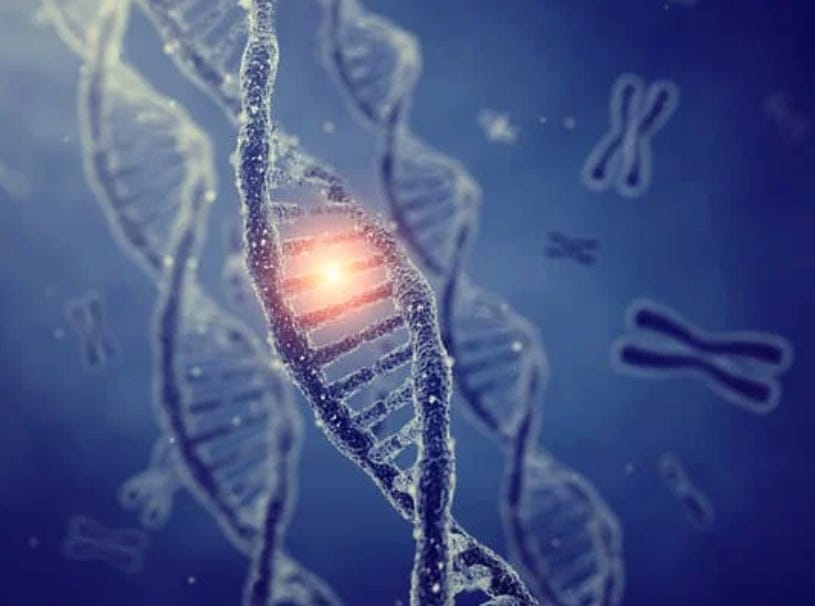Setup
Freethink was looking for freelance writers to pitch and contribute feature articles to their publication. I pitched a few ideas about exploring the intersection of tech, business, and society. Here’s one of them.
The Article
In a nondescript laboratory in Boston, scientists are editing the genes of rice plants, not to cure disease, but to help them withstand the mounting pressures of climate change. Across the country in California, researchers are tweaking the DNA of microorganisms to break down environmental pollutants. And in laboratories worldwide, teams are reimagining the possibilities of life itself through synthetic biology.
Welcome to the new frontier of gene editing, where CRISPR and related technologies are moving beyond medical applications to reshape our world in unprecedented ways.
Beyond the Hospital Walls
While CRISPR (Clustered Regularly Interspaced Short Palindromic Repeats) made headlines for its potential to cure genetic diseases, its applications extend far beyond human health. This revolutionary tool, often described as "genetic scissors," allows scientists to make precise changes to DNA with an ease and accuracy previously unimaginable.
"We're at a turning point where gene editing is becoming sophisticated enough to address some of humanity's greatest challenges," says Dr. Jennifer Doudna, Nobel laureate and CRISPR pioneer. "From food security to environmental restoration, the possibilities are expanding rapidly."
Engineering a More Resilient Food Supply
As climate change threatens global agriculture, scientists are turning to gene editing to develop more resilient crops. The Innovative Genomics Institute, for instance, is creating rice varieties that can thrive in conditions that would typically stunt growth or reduce yields.
"We're not just making minor improvements," explains Dr. Sarah Martinez, lead researcher at the Climate Resilient Agriculture Initiative. "We're helping plants adapt to a changing world by enhancing their natural ability to withstand drought, resist pests, and survive in increasingly harsh conditions."
Unlike traditional genetic modification, which often involves introducing genes from different species, these new techniques typically make precise adjustments to existing plant genes. The result? Crops that are both more sustainable and more acceptable to consumers wary of GMOs.
Environmental Solutions Through Synthetic Biology
Perhaps the most ambitious applications of gene editing lie in environmental science and synthetic biology. Companies like Zymergen and Ginkgo Bioworks are engineering microorganisms that can break down plastics, produce sustainable materials, or capture carbon dioxide from the atmosphere.
"We're essentially programming biology to solve environmental problems," says Dr. Jason Chen, founder of BioRemediation Technologies. "By modifying the genes of naturally occurring bacteria, we can create living solutions to pollution and waste."
The breakthroughs in this field are remarkable and diverse. Scientists have successfully engineered bacteria capable of breaking down persistent environmental pollutants that would otherwise remain in ecosystems for decades. Research teams have modified algae strains to produce sustainable biofuels more efficiently than ever before, potentially offering an alternative to fossil fuels. Perhaps most promising are the synthetic organisms designed to detect and clean up toxic spills, providing rapid response solutions to environmental disasters.
Restoring Ecosystems and Preserving Biodiversity
Gene editing is also offering new hope for endangered species and damaged ecosystems. The Revive & Restore project is using genetic technologies to increase species diversity and resilience, potentially even bringing back extinct species to restore ecological balance.
"We're not playing God," insists Dr. Rachel Woods, conservation geneticist. "We're developing tools to repair some of the damage human activity has caused to natural systems."
What Does the Future Hold
As gene editing technology continues to evolve, its applications beyond medicine are likely to multiply. From creating more sustainable materials to engineering solutions for environmental challenges, we're only beginning to understand its potential.
"The next decade will be transformative," predicts Dr. Doudna. "We're moving from reading the code of life to writing it, and that opens up possibilities we're only starting to imagine."
The revolution that began in medical laboratories is now spreading across disciplines, offering new tools to address some of humanity's most pressing challenges. As we continue to expand our understanding of genetic engineering, one thing becomes clear: we're not just rewriting the code of life, we're redefining what's possible.


